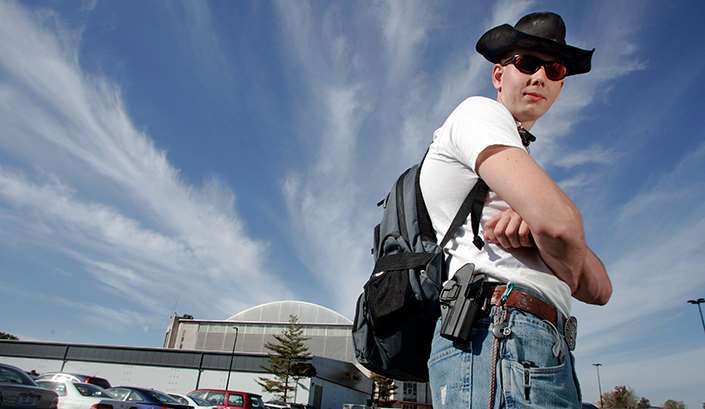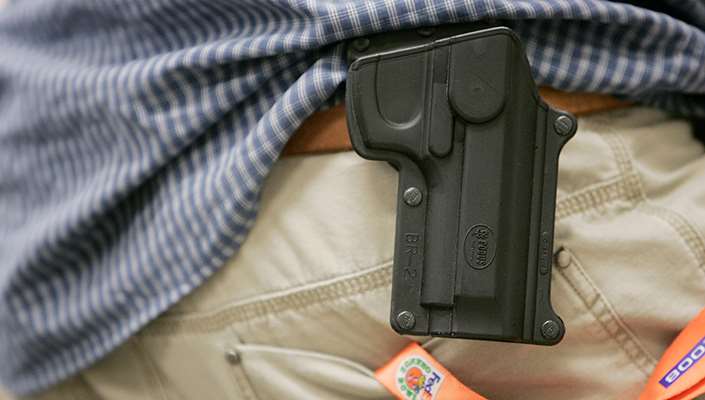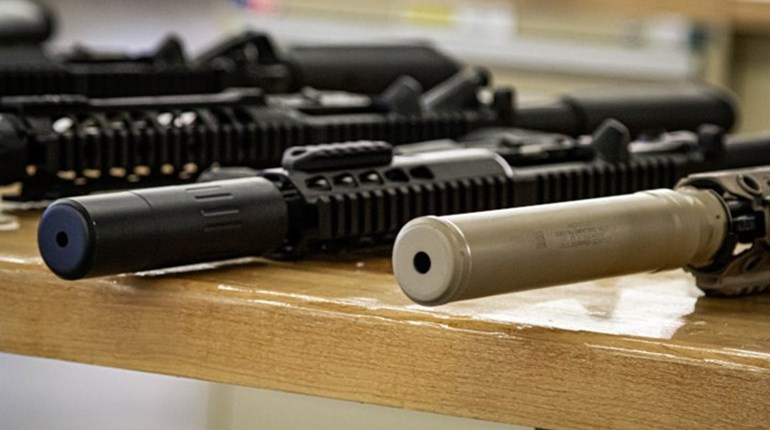
The Second Amendment, like other amendments included in the U.S. Bill of Rights, is a restriction on government. The U.S. Supreme Court, in McDonald v. Chicago (2010), expanded this right as a restriction on state and local governments.
This decision made it crystal clear that blanket gun bans imposed by governmental entities are unconstitutional. So, blanket bans on public college campuses should likewise be unconstitutional. An 18-year-old woman, for example, has the constitutional right to protect herself on a college campus, a place where sexual assaults are a real problem. Making sure these students have the opportunity and the training to defend themselves is why the National Rifle Association has long been active on college campuses (see, nraila.org/campaigns/grassroots/nra-on-campus).
This individual-rights argument is so clearly constitutional and fundamental to human safety that, to oppose it, some officials have had to resort to novel approaches.
Back in 2016, for example, three professors at the University of Texas at Austin (UT)—Dr. Jennifer Lynn Glass, Dr. Lisa Moore and Dr. Mia Carter—sued the university and the state of Texas over a 2015 law allowing certain license holders to carry handguns on public college campuses.
The main argument advanced by the three academics was that the law (and the UT policies implementing the law) somehow violated their free-speech rights. “Compelling professors at a public university to allow, without any limitation or restriction, students to carry concealed guns in their classrooms chills their First Amendment rights to academic freedom,” said these professors. Their reasoning was that, as professors, part of their teaching responsibilities included engaging in classroom discussions of “controversial, emotionally-laden topics.” They were afraid (or, at least, said they were) that these discussions could lead to shoot-outs between armed students.
These professors said this possibility would force professors “to pull back, consciously or sub-consciously, at important junctures in classroom exposition and discussion” due to their fear that a more robust debate might incite “violent classroom action with a gun.”
More broadly, the professors claimed that the possibility of a student being in the classroom while lawfully carrying a firearm for personal protection “would jeopardize the community of trust and be destructive to the dynamic educational process” for educators and students alike.
So, they argued, the possible presence of a person with a concealed-carry gun would shut down free speech. They made this argument in a society that, traditionally and practically speaking, has always presented this very possibility, yet the dire consequences they cite haven’t been a part of American culture. To put this in context, ask yourself how often larger male students in a classroom have tried to physically dominate other students and their teachers because they might have been on the losing side of an impassioned debate.

A court soon refused to grant the preliminary injunction sought by the plaintiffs (the professors) in this case, on the basis that their First Amendment claim was meritless: “The court has searched the jurisprudence of this country from the ratification of the Constitution forward and has found no precedent for Plaintiffs’ proposition that there is a right of academic freedom so broad that it allows them such autonomous control of their classrooms, both physically and academically, that their concerns override decisions of the legislature and the governing body of the institution that employs them.”
The professors’ claim fared no better when it reached the U.S. Court of Appeals for the Fifth Circuit. The appellate court confirmed that the plaintiffs lacked standing to bring their challenge because the harm they attributed to the state law and UT policies was, in essence, an unrelated, “self-imposed censoring of classroom discussion caused by their fear of the possibility of illegal activity” by students or others, where “none of the cited evidence alleges a certainty that a license-holder will illegally brandish a firearm in a classroom.”
The only “chilling effect” of the law on academic speech is nothing more than a self-inflicted silence resting on irrational prejudices about lawful concealed carriers.
The fact that legal adults should not give up their rights just because they enroll in a public university has been so plain that, in part thanks to lobbying and legal work done by the NRA, gun bans and other restrictions have been rolled back on many campuses.
Campus carry, for example, went into effect in Colorado and Utah in the early 2000s, and in another nine states over the next decade.
But, these laws have not been without their “critics.” Prior to campus carry taking effect in Texas on Aug. 1, 2016, Time magazine reported that University of Houston professor Jonathan Snow warned his fellow professors to change their curriculum and avoid “sensitive topics” to keep from angering armed students. He oversaw a faculty presentation that warned that professors should “drop certain topics from [their] curriculum,” “not ‘go there’ if [they] sense anger” and “limit student access off hours.”
Other critics of campus carry went even further. For instance, the Huffington Post quoted Richard Martinez telling the Texas legislature: “I heard arguments about how [campus carry] will help women defend themselves against sexual assaults. Isn’t it more likely there will be more assaults at gunpoint?”
Actually, the data shows that women with access to their Second Amendment rights are often able to stop sexual assaults before they can be completed. In an article in The Washington Post, the Independence Institute’s Dave Kopel said, “The U.S. Census Bureau conducts in-person interviews with several thousand persons annually, for the National Crime Victimization Survey (NCVS). In 1992-2002, over 2,000 of the persons interviewed disclosed they had been raped or sexually assaulted. Of them, only 26 volunteered that they used a weapon to resist. In none of those 26 cases was the rape completed; in none of the cases did the victim suffer additional injury after she deployed her weapon.”
The NCVS findings show that the anti-campus carry arguments and assumptions are not only nonsensical, but also devoid of any factual support.

The reality is a good person with a gun can stop a bad person with a gun, but they cannot do so if they lack the ability to legally possess a gun for self-defense. In a classroom of disarmed citizens, the criminal with a gun is very difficult to stop. But restoring campus carry rights takes the advantage away from the criminal by giving students with concealed-carry permits a means to fight back.
Instead of giving in to ignorance and fear, which is what the anti-Second Amendment advocates are doing, isn’t it better to empower people to responsibly protect themselves?
This is one thing the NRA does. “NRA on Campus” gives students the information needed to organize and promote real safety on campuses. Students can become “NRA Campus Coordinators” or start an “NRA Collegiate Coalition” with the tools available at nraila.org/campaigns/grassroots/nra-on-campus.
Students have successfully advocated for their right to self-defense. Amid the ensuing policy discussions, a student at the University of North Texas created “Students for Concealed Carry on Campus,” a Facebook group advocating for removing rules that banned concealed carry on college campuses. The cause gathered attention from national and international media, and support from figures such as then-candidate Donald Trump, who said of the Umpqua Community College shooting, “If you had a couple teachers with guns in that room, you would have been a hell of a lot better off.”
Altogether, a full 35 states have, over the last few decades, considered some form of campus carry, several of which were signed into law.
In 2013, Kansas decriminalized campus carry. In 2014, Idaho followed suit (requiring an enhanced permit). Texas followed in 2016, and Arkansas and Georgia in 2017. Other states passed lesser measures, such as faculty carry in Tennessee and Arkansas, campus carry in Mississippi (with an enhanced permit) and guns allowed in cars in North Carolina.
A variety of lawsuits added mixed successes to the list: In a 2006 decision, Utah’s Supreme Court overturned the state’s campus-carry ban, preempting all public university gun bans in the state. Despite Colorado’s 2003 Concealed Carry Act, Colorado University’s board of regents passed campus-wide restrictions on concealed carry. Students for Concealed Carry challenged the law, eventually winning a unanimous victory from the Colorado Supreme Court in 2012. The ruling effectively required public universities in Colorado to permit licensed carry per state statutes. Colleges begrudgingly complied, though in some cases they created segregated dormitories for armed students.
In 2011, following a student’s suspension for possession of a concealed handgun, a three-judge panel from Oregon’s Court of Appeals overturned campus gun bans, citing a state preemption law, which prohibits most firearm-related restrictions being enacted by any governing body but the state legislature.
Many colleges have chosen not to challenge court rulings, while others have had mixed results through the judicial process.
In the same year as the Oregon ruling, Virginia’s Supreme Court ruled George Mason University’s ban on guns was not an infringement, claiming the college was one of the “sensitive places” exempted in the landmark Heller decision, though carry was still allowed in public areas. Later in the year, then-Virginia Attorney General Ken Cuccinelli authored an opinion stating University of Virginia gun bans were overly broad, though most Virginia schools reissued their bans in compliance with Cuccinelli’s opinion.
In 2012, the University of Kentucky fired an anesthesia technician for having a firearm locked in his car parked on campus. The Kentucky Supreme Court ruled against the college, finding that keeping guns in cars parked on university property was not illegal, therefore it was not grounds for dismissal.
In 2015, a University of Missouri professor sued the college for its gun ban, arguing the college shouldn’t have the discretion to limit state constitutional rights. A circuit court judge ruled against him, but the case is still being appealed.
In 2017, a Michigan Appeals Court declined to overturn the University of Michigan’s gun ban. The case was brought by a civilian who argued Second Amendment and state-law preemption claims after being denied an exemption by the university.
In 2019, the Students for Concealed Carry Foundation reached a settlement with Ohio State University overturning another prohibition on guns in cars. The case was brought by an adjunct faculty member after realizing the car restrictions differed from state law.
In the final telling, campus carry is legislatively banned on college campuses in 16 states. Another 23 give discretion to college authorities, and 11 states permit licensed concealed carry on campus, according to Students for Concealed Carry. Additionally, certain colleges in Ohio and Virginia allow limited campus carry, and some in Michigan permit non-students to carry on campus.
The battles for freedom—for safety—continue.
Never content to tread on just one amendment, the same groups who said the Second Amendment could “chill free speech” began attacking the First.
In 2019, a community college suspended Dia’mon Dallas, a student and single mom, for posting a picture of herself with a gun at the range. Anand Venigalla was interrogated by Long Island University’s administrators for posing with an unloaded firearm on Facebook. Other colleges have tried to censor empty-holster protests and even to attempt to stop students from passing out copies of the U.S. Constitution.
Last year, Chance Fletcher, president of Harvard Law School’s Federalist Society, was castigated by media for handling a gun during a Zoom class. And a senior named Austin Tong, a Chinese immigrant, was banned from Fordham University after posing on Instagram with a legally obtained rifle and the phrase “don’t tread on me” to memorialize the Tiananmen Square massacre.
Colleges unquestionably face unique challenges requiring multidisciplinary solutions, but taking away a constitutional right designed to give good people a chance to defend themselves isn’t a solution; it’s flawed thinking leading to greater problems.
David Burnett is an ICU nurse based in Detroit, Michigan. He holds bachelor’s degrees in business and nursing from the University of Kentucky and a law degree from the University of Akron and is a frequent contributor to America’s 1st Freedom.
































